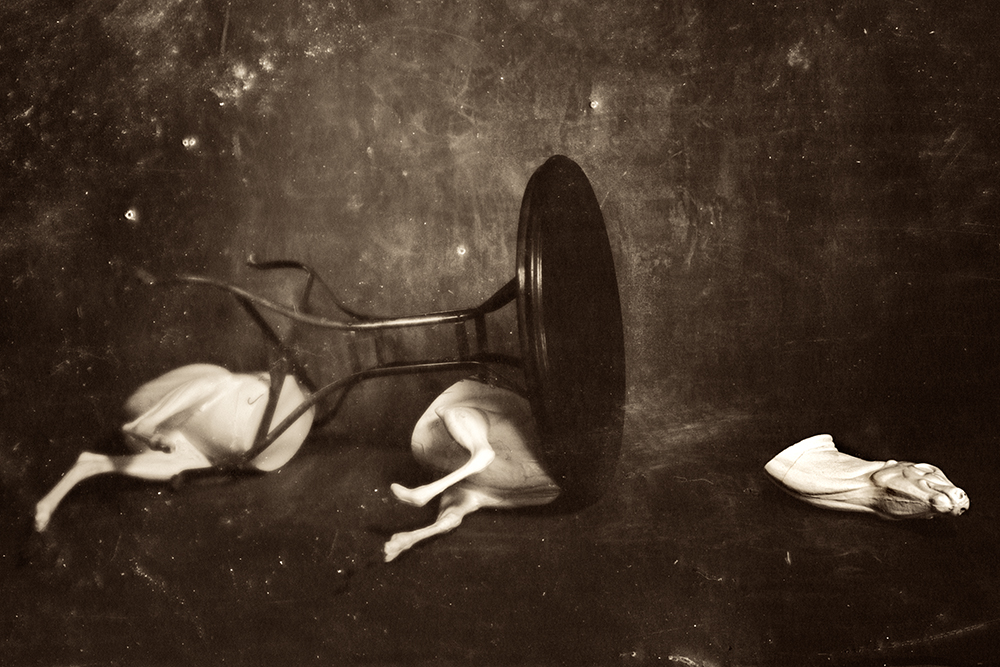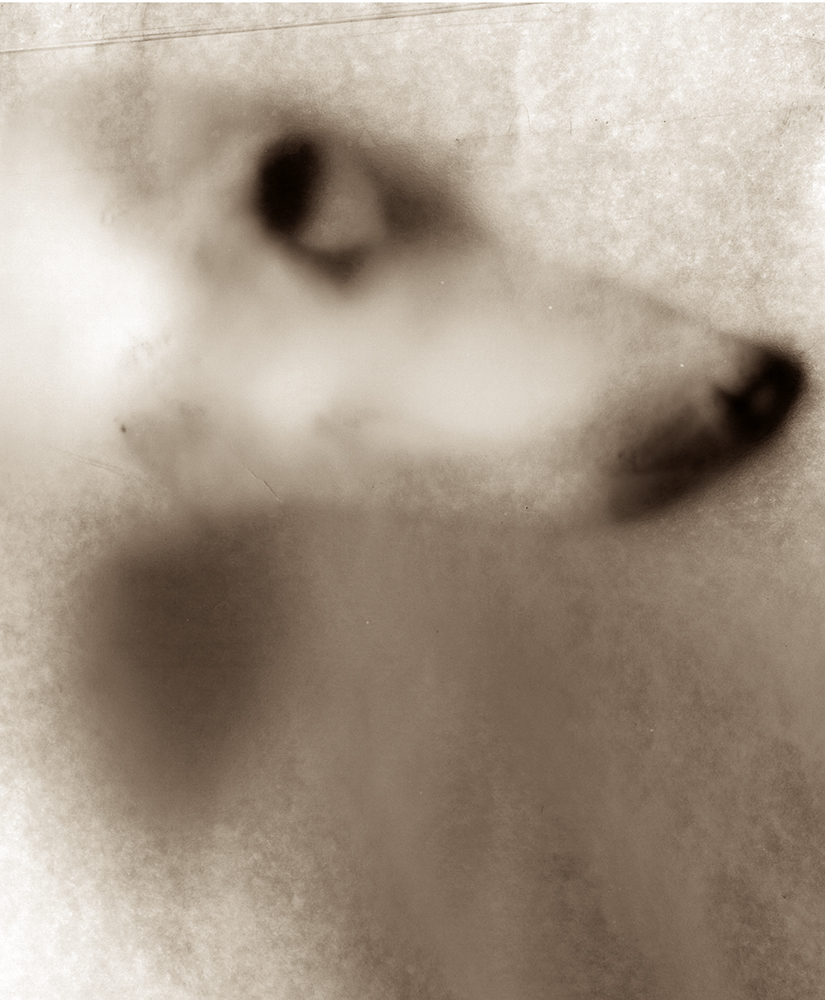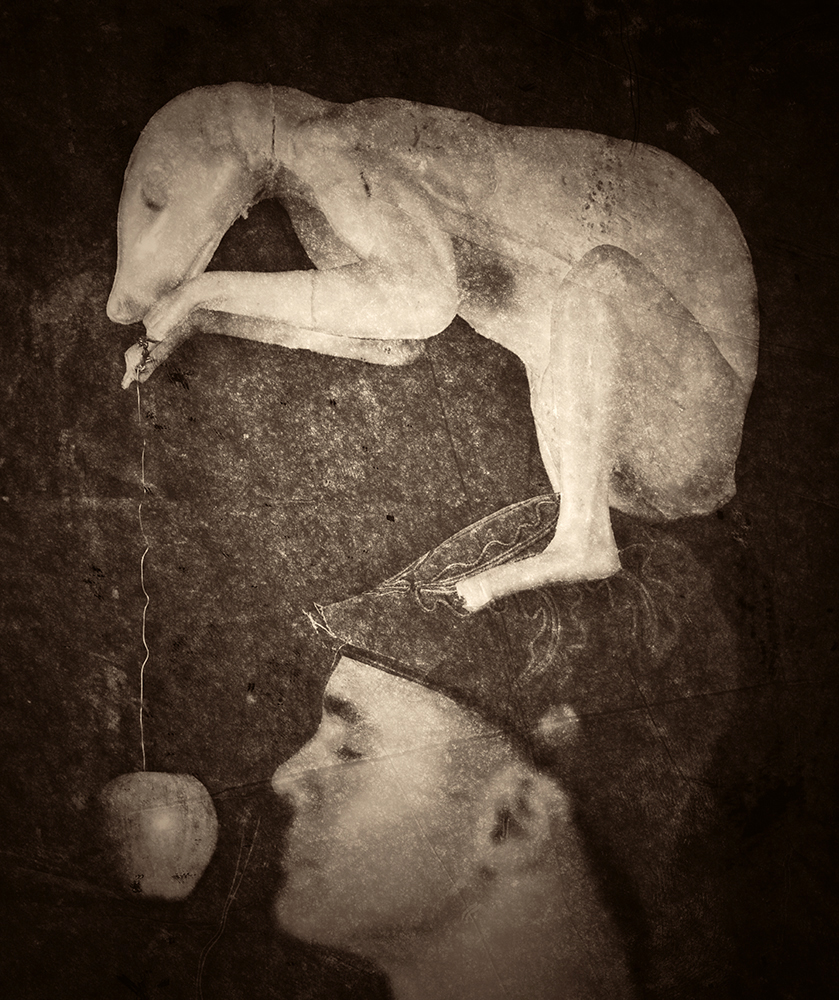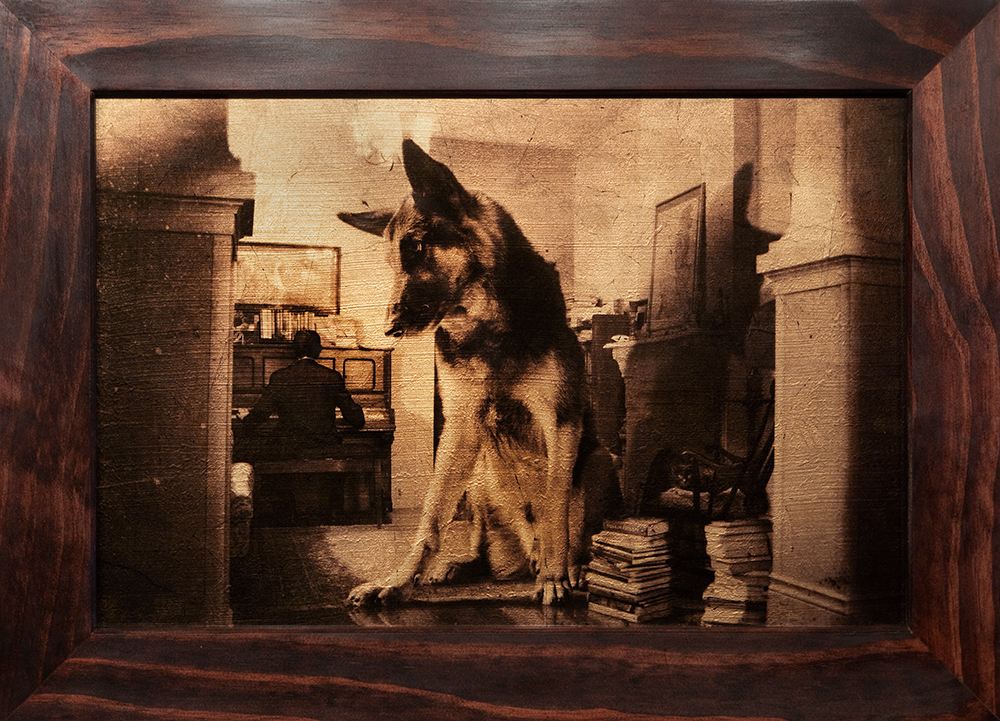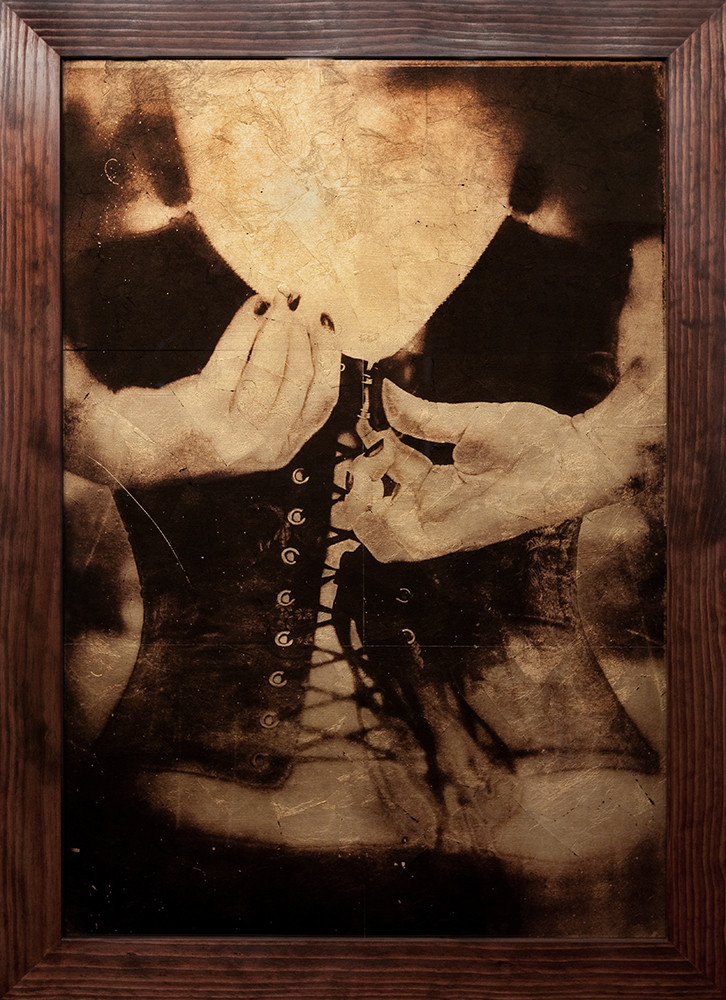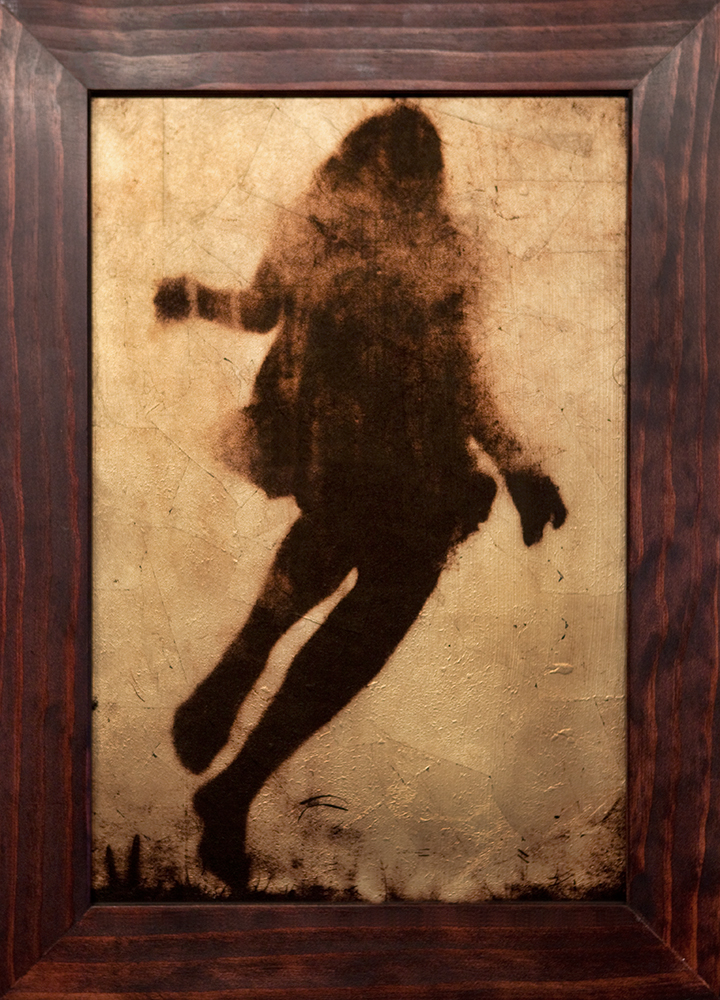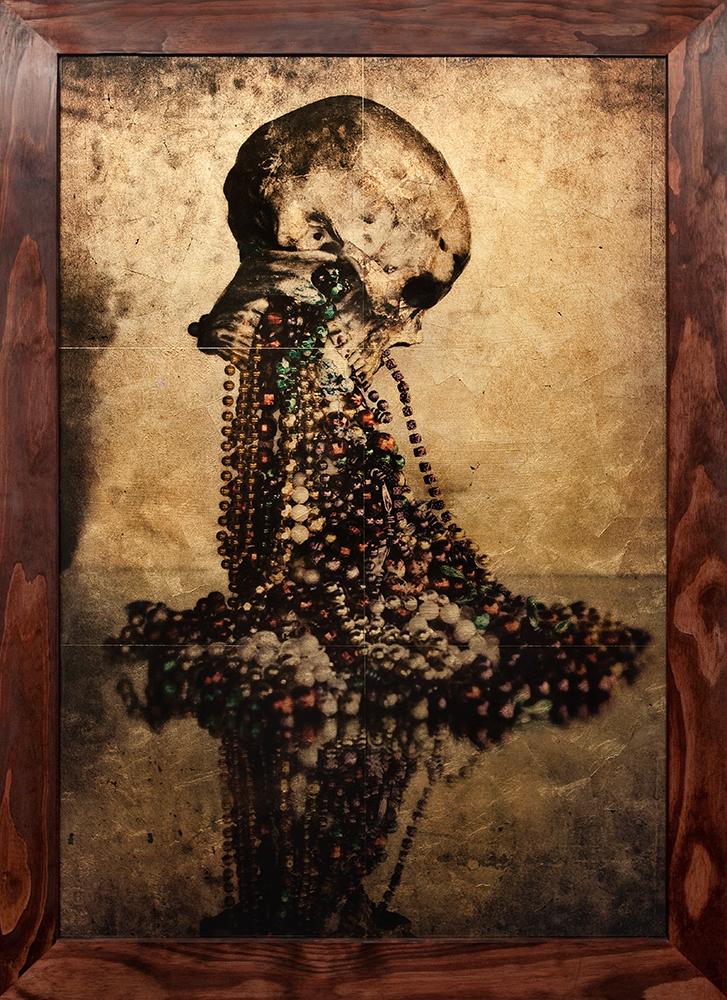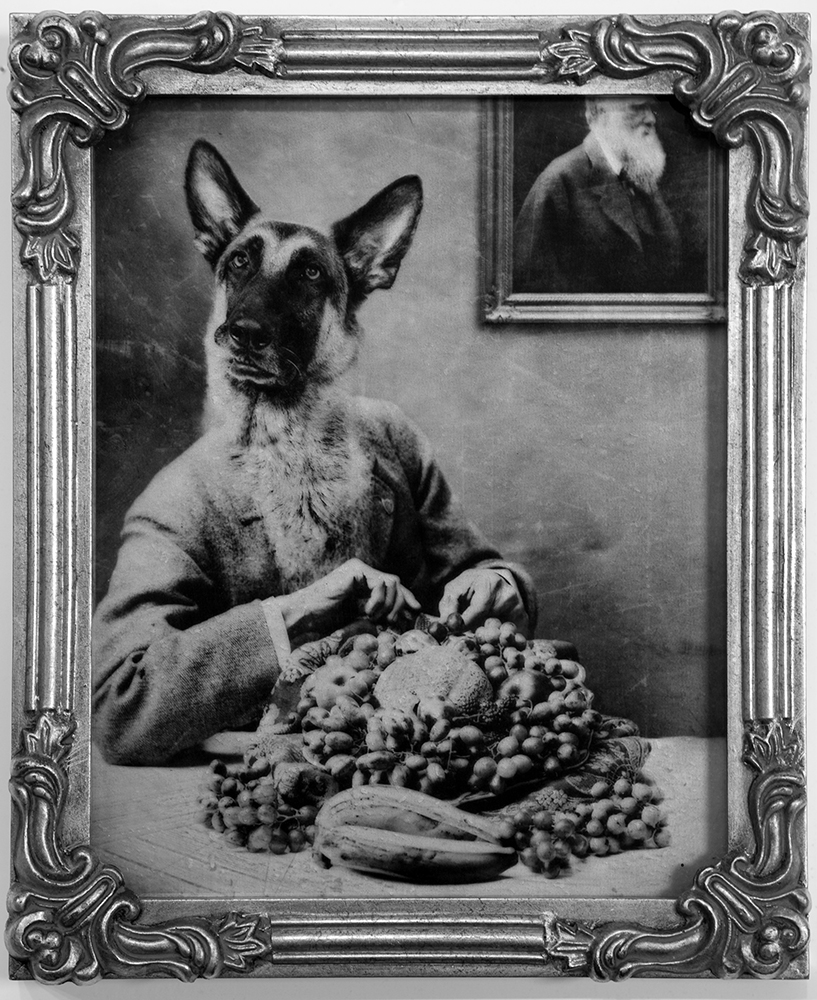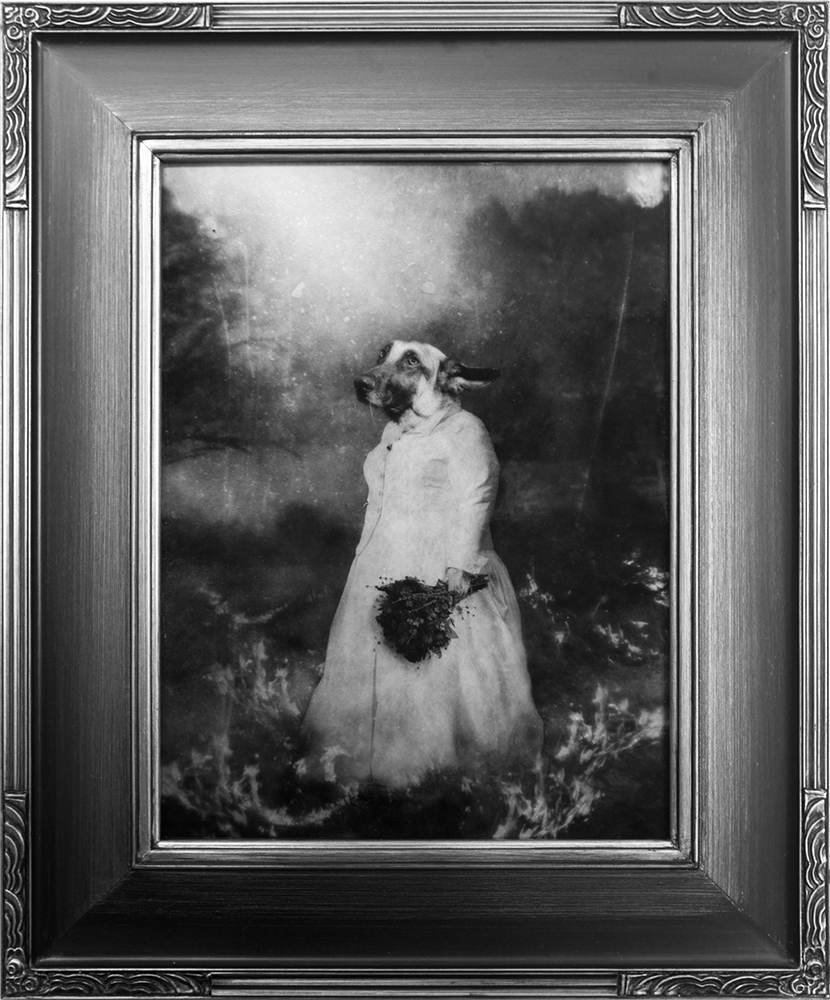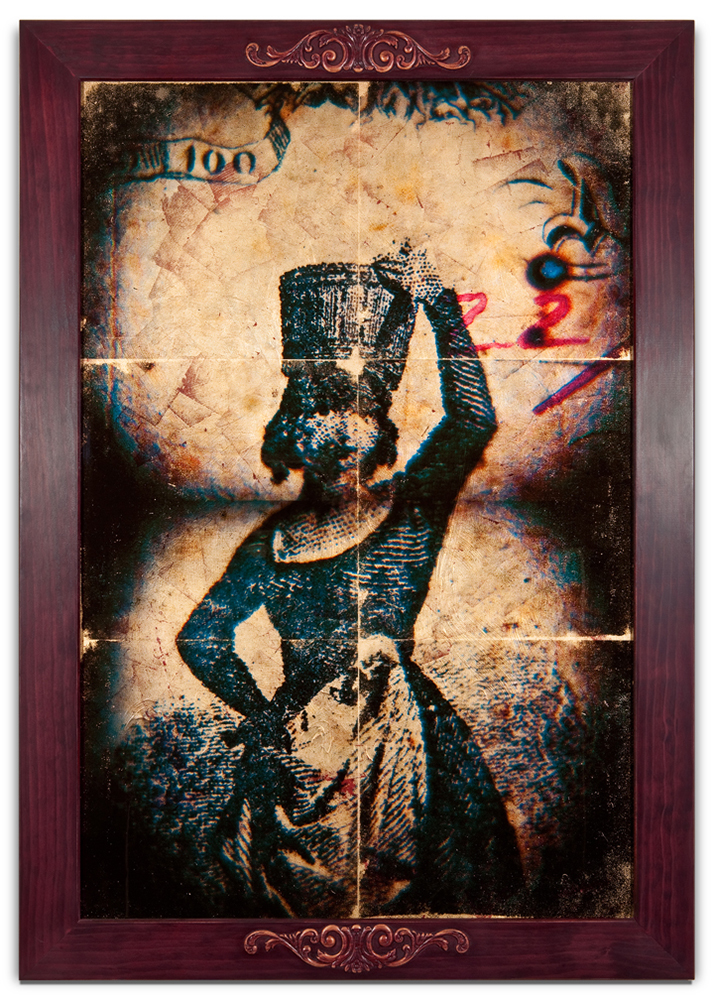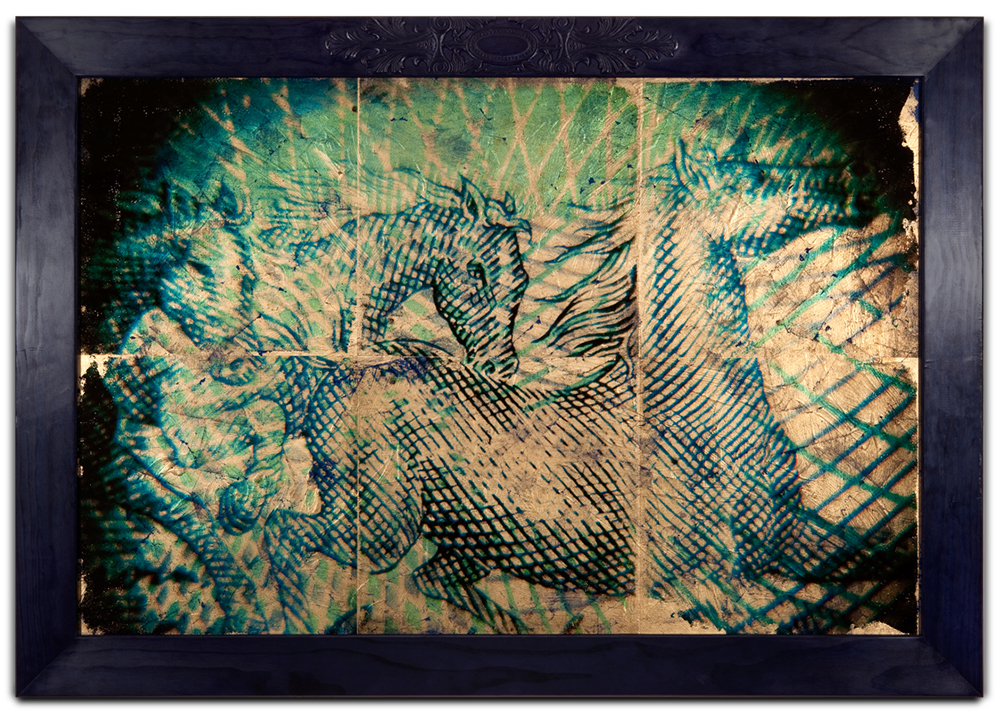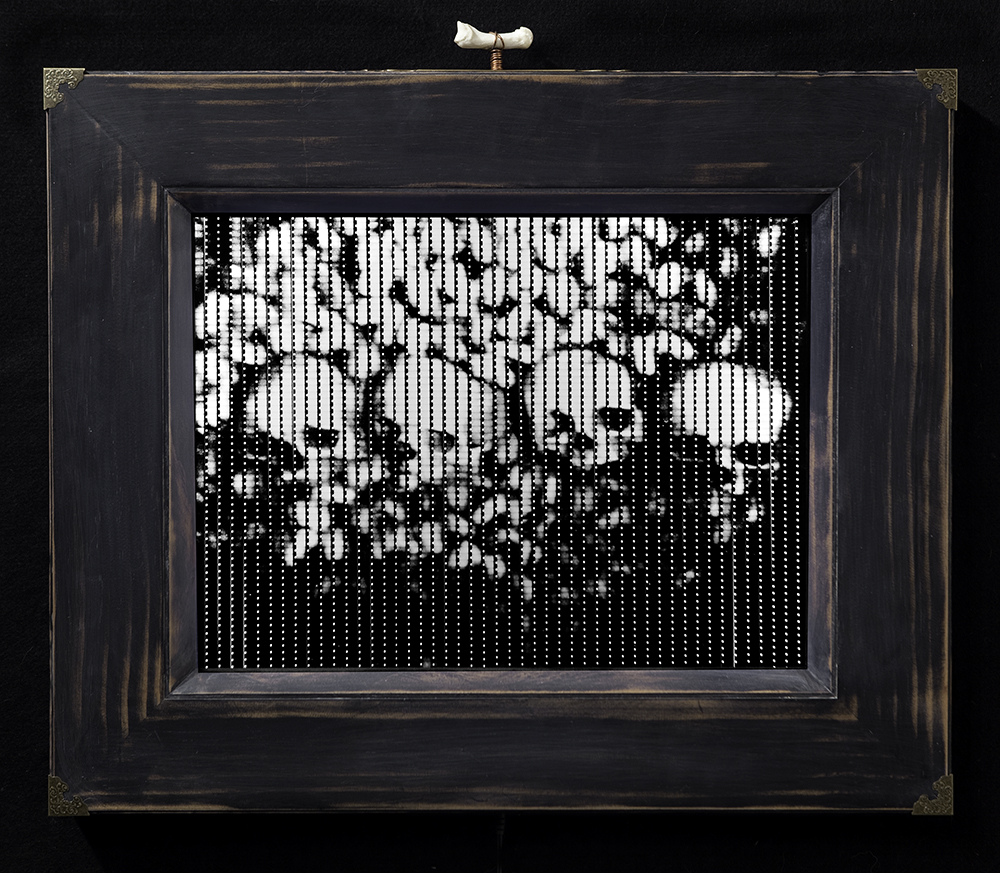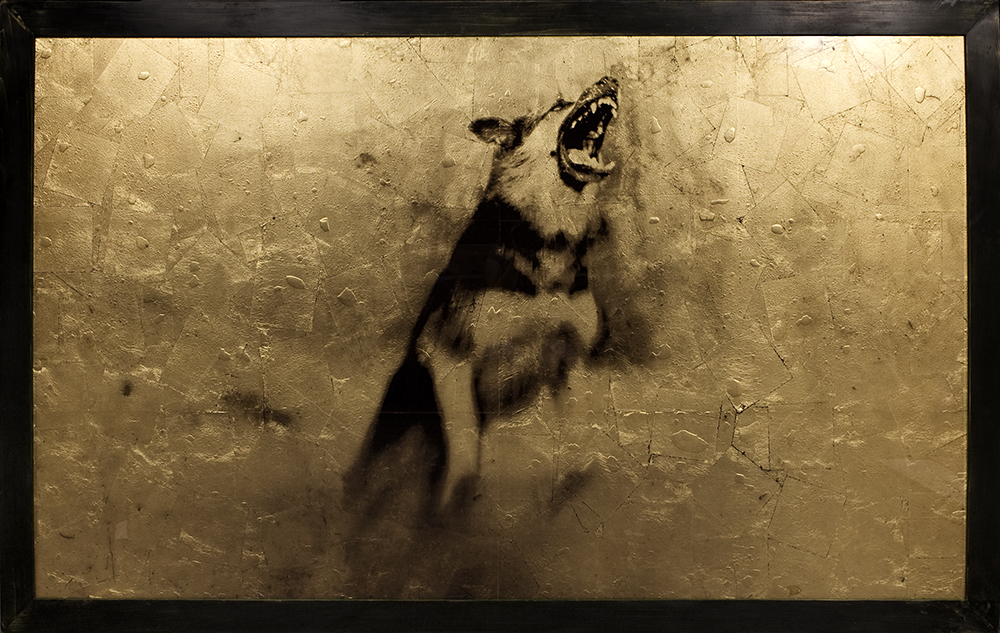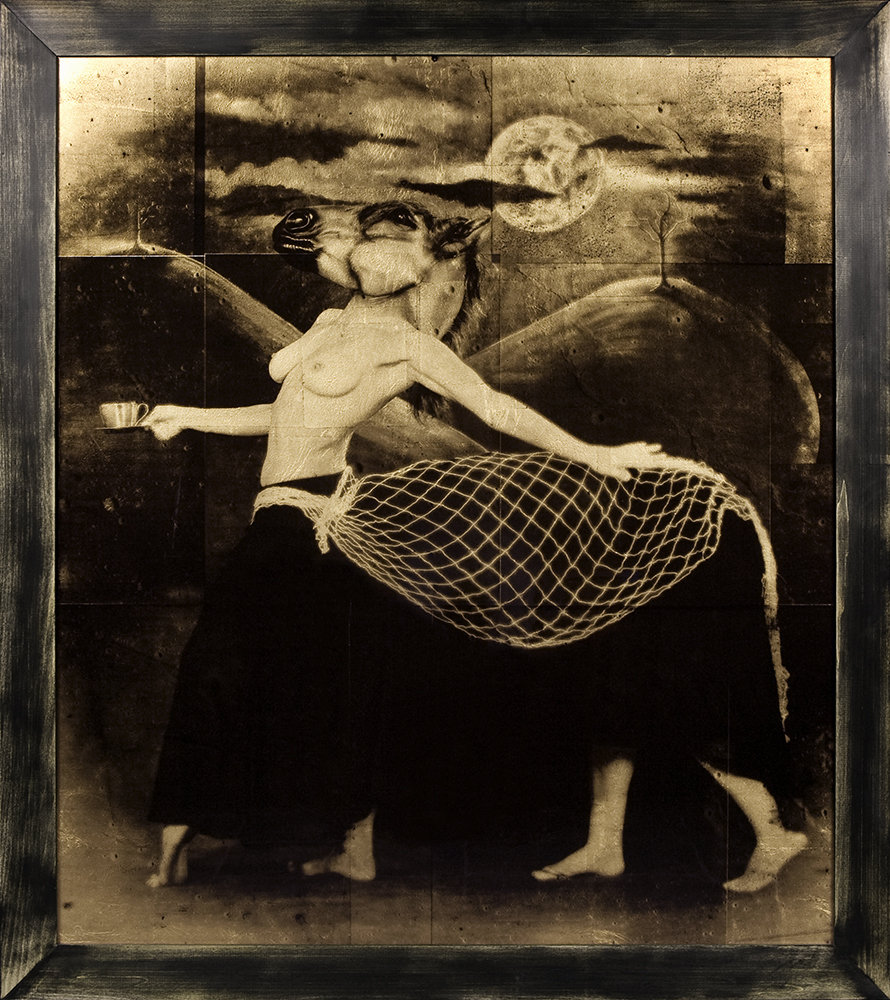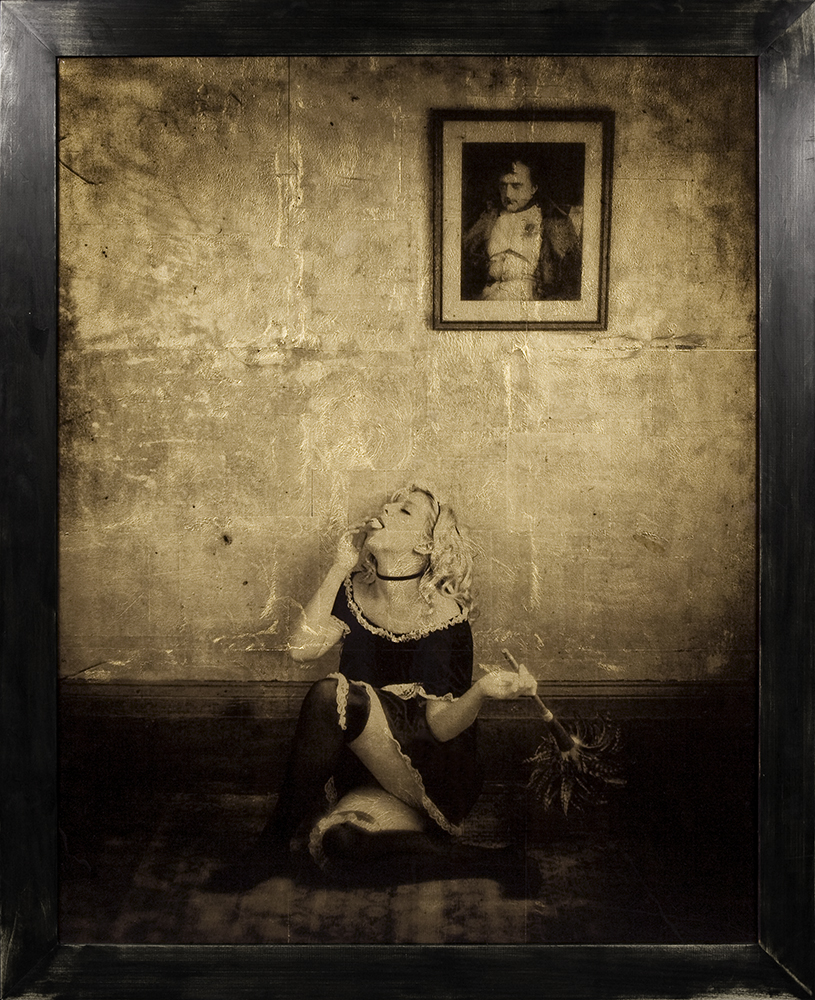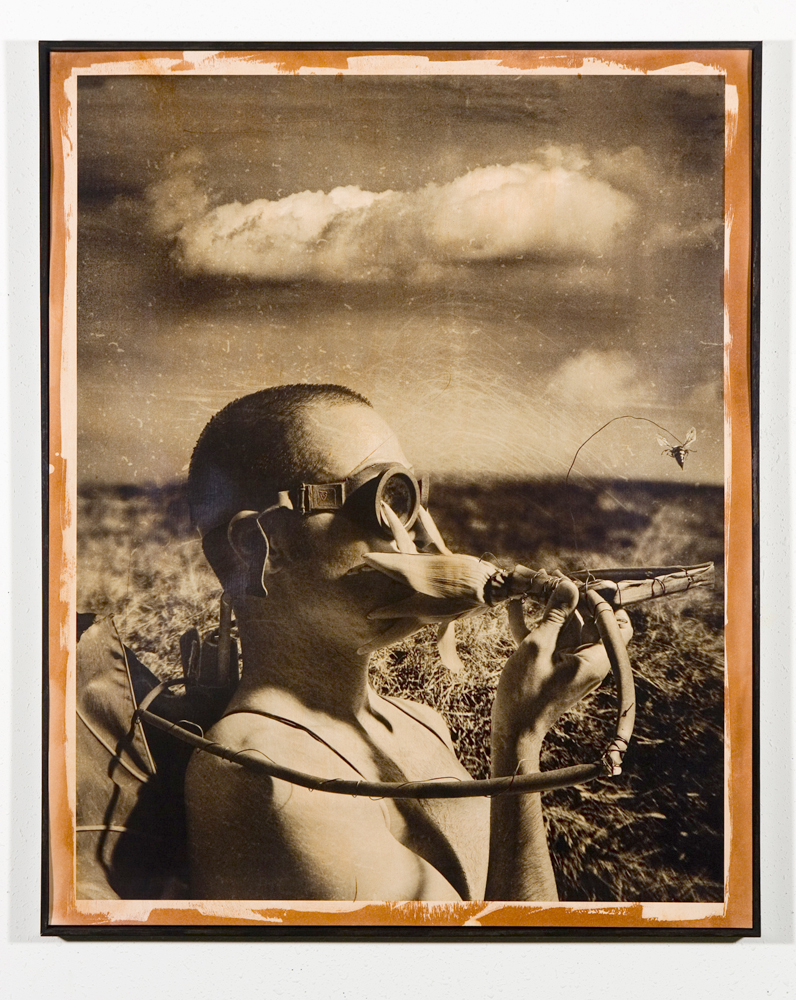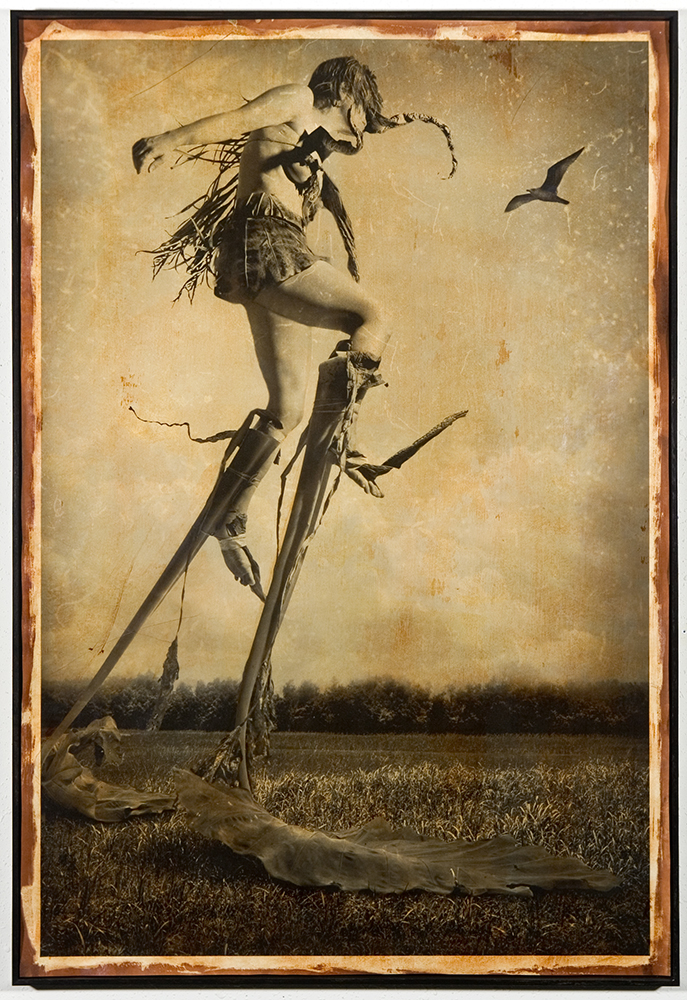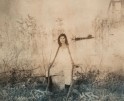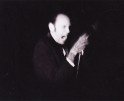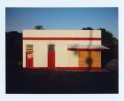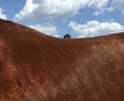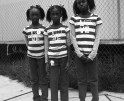Vanessa Brown: The States Project: Louisiana
Vanessa Brown, one part of the Louviere + Vanessa collaboration, will be taking the lead this week as Lenscratch dives into The States Project. This time, we are featuring the work of six Louisianan photographers, all using the medium to different effects, and giving a very well rounded idea of what the state has to offer. Vanessa has been in collaboration for over a decade with her husband, Jeff Louviere. Their work together is explorative and fun, and projects twisted tones to enigmatic themes, all while destroying negatives and manipulating final presentation. Today I share an overview of their entire collaboration, and I also speak with Vanessa on how she wound up in Louisiana, and how their collaborative venture began.
Louviere + Vanessa make their home and art in New Orleans. Their work effectively combines the mediums and nuances of film, photography, painting and printmaking. They utilize Holgas, scanners, 8mm film, destroyed negatives, wax, and blood. Since they began professionally showing in 2004, they have been in over 50 exhibits and film festivals in America and abroad. They are included in the collections of the Museum of Art | Houston, the Photomedia Center, the New Orleans Museum of Art, the Ogden Museum of Southern Art as well as the film archive for Globians International Film in Potsdam Germany and Microcinema in San Francisco. Six images from the Creature series were acquired by the George Eastman House for an exhibit that traveled the world through 2010. They experiment in moving pictures and have created the first movie shot with a plastic Holga camera consisting of 1,900 frames. Based on that film, they shot the animation sequence for Rosanne Cash’s short film, “Mariners & Musicians”, which had its world premiere at the Tribeca Film Festival. They were included in the Australian Photography Biennale. Their first museum exhibition was at the Ogden Museum of Southern Art opening in October 2012 followed by a solo show at the Polk Museum of Art in Lakeland Florida. They collaborated with author Michael Zell in 2013 for the book “Oblivion Atlas”. Their work served as influence and inspiration for short stories by Michael Allen Zell, and L + V, in turn, have created new work to serve as backdrop and counterpoint to the stories. The recent book from Candela, “Black Forest” features some of their work in context to modern surrealism and was designed and illustrated by Jeff Louviere. They are now working on photographs of sound and creating a 12” vinyl record with music, images and animation.
Jeff Louviere is from New Orleans; Vanessa is from New York, and they met each other half-way, in Savannah. Jeff graduated from the Savannah College of Art and Design during which he and three other artists created the world’s largest painting, a 76,000 square foot image of Elvis, which was included in the Guinness Book of World Records. Vanessa began photographing at age 12 and won a Kodak International Award of Excellence in Photography when she was 17. She photographed through Italy and Greece before graduating from Rochester Institute of Technology with a degree in Photography.
Louviere + Vanessa’s tableaux vivant series, Slumberland, began in 2003. It is a collection of separate narratives existing as a dialogue between the couple. In 2005, they started on their Creature series, a singular story told through many faces and as such the opposite of the Slumberland series. They have a long fascination with themes of duality, and paradox: beauty as horror, creation as destruction, the personal as a universal. Craft and concept are the devices they use to explore the gray zone within those themes.

Vanessa shares her perspective on being a Louisiana based photographer:
Out of all the places I have lived, New Orleans has always felt like home to me. When we first moved here in 1998 I remember walking the dogs and everyone would stop and say something to me. I really love that anyone and everyone will talk to each other and I have not felt that anywhere but here. The open-ness and honesty of the people that live here is what makes this city so rich and entertaining. After Katrina the art scene blew up here. There were so many creative people flocking to New Orleans we went through a Renaissance period and now New Orleans is considered the most creative city in the country based on quality of life. Meaning you can still afford to live here and make it as an artist. That is quickly changing however because of all the people moving here. We bought a house in the Bywater fifteen years ago and if we tried to buy our house now it would be impossible. We can walk from our house and up the street there are four galleries that popped up after Katrina. Our neighborhood is considered one of the hippest in the city and we have seen significant changes from when we bought here. You can walk down any street and there is art hanging from telephone polls and fences to entire buildings covered in art.
The other big thing that happened after Katrina was a group of photographers got together and started the Photo Alliance. From that a core group of us under the umbrella of the Photo Alliance started the PhotoNOLA festival which is now in its eleventh year. We host portfolio reviews, education workshops and gallery showings all across the city. We had no idea at the time it would grow to be one of the most popular photo festivals in the country.
More about Louivere and Vanessa’s work:
Tradition and adventure — a description both personal and cultural, not ascribed to us, but by us. The South gave the world flight, rock-n-roll, the birth of a nation of filmmakers and an endless source of artistic raw materials.
Louviere + Vanessa combine the mediums and nuances of film, photography, painting and printmaking. They utilize Holgas, 8mm film, destroyed negatives, gold, resin, wax and blood. They have a long fascination with themes of duality and paradox: beauty as horror, creation as destruction, the personal as a universal. Craft, concept and history are the devices they use to explore the gray zone within those themes.
Louviere + Vanessa explore the idea that the medium of photography is more important than any one photo because the radical mechanics of photography has caused them to consider the making of images. They’ve taken the raw materials, changed variables and given them new possibilities within the realm of photography.
I see that you are originally from New York, transplanted to Louisiana. What brought you to the state, and how has the cultural shift changed the work you make?
I grew up in the country surrounded by alfalfa and corn fields, miles away from anywhere. When my brother was attending SCAD I decided to move to Savannah to be closer to him and that is when I met Jeff. After he finished his Masters Degree we moved to Asheville, NC for a year and a half and at that time it was a great place to retire but not a place to make a career. Jeff is originally from New Orleans so we thought what the hell, let’s give it a shot. I have lived in the South almost as long as I lived in the North and I am a Southerner at heart.
How did your collaboration with Jeff Louviere begin, and how do you think it has pushed you as an image-maker and an artist?
I have a degree in Photography and Jeff has degrees in graphic design, printmaking and painting. We were doing our own art at the time and would ask each other questions and each give our two cents to the other. One day I attended a Keith Carter work shop and it was mind blowing. I came home so excited to take pictures that I would not shut up about it and talked to Jeff about collaborating. Slumberland was the result of that. We would come up with ideas and Jeff would make the props and the back grounds and from there we have never looked back.
How would you describe your collaborative roles?
Over the years our roles have changed some what. Jeff now knows how to use a camera and I get to play with materials I wouldn’t have thought of before in conjunction with photography. We both have notebooks of ideas we bring to each other and discuss whether it’s something worth pursuing. A lot of our work couldn’t have been done without both of us. I guess the easiest thing to say is we both love what we do and doing it with your best friend makes it all worth while.
Your practice is very non-traditional, such as the visualized sound pieces that we featured last August. What has led to such a versatile approach in image making, and why do you pick the materials you use for your work? Perhaps the “raw material” inspiration you see in The South reflects the physical raw materials you use?
Our practices are now very non-traditional but at the time we started collaborating I was still a stiff and proper photographer who thought everything needed a white matte and a black frame. Because of Jeff’s background he always played with materials. One day I came home and found some negatives in our kitchen sink covered in Comet with a steel wool pad next to it. While I am having a heart attack Jeff looked at me and said “isn’t it great”? From there I realized that art was way more fun than photography, and the camera became just another tool. I began experimenting with different things. For instance, I took some negatives and brushed them with olive oil then dipped them in cornmeal. After that I put them through my very expensive film scanner and didn’t think twice about it except to see what it would look like.
That is probably the epitome of living in the South! Another time I was in the back yard cutting back plants and I took all the dead leaves from our elephant ears and threw them in the shed and told Jeff I had an idea of turning them into clothing. That was the impetus for our Chloroform series.
Jeff and I love to experiment whether through imagery or materials. Both things have to come together and make sense with each other in order for the work to be considered successful to us. Our love of experimenting has taken us down many different paths but it motivates us to keep trying something new.
How do you both know when the materials and images are working in sync? What determines these materials?
A good example of that would be when we were working on our Creature series, taking pictures of taxidermy mannequins. Because the forms are made out of hard foam and look like skinless animals we wanted to print them on paper that mimicked skin. So we chose a torinoko/kozo paper. After that we toned the images using wax and blood to “give them life” so to speak. Sometimes it depends, we figure out a process we want to work with then decide what imagery we see going with that process. Other times it’s the imagery that decides the process.
Your images are rich with thematically fantastical visuals. Even the feel to the images, the foggy nature, the dated allusions, contributes to what I would consider dream-like. Where are these ideas coming from?
Our ideas stem from themes of duality: creation as destruction, personal as universal and recently sight as sound. We are conceptual based with a hint of Southern Gothic thrown in for good measure. A story I can tell you is one day I went into the studio and I had a couple of bird wings in a zip loc bag I had brought back from my fathers home after crawling under his porch to see what the cat dragged in. I threw them on the ground and just started playing with them then Jeff walked in the room and asked me what I was doing. I told him I was playing around with these bird wings and the next thing you know we filmed our movie “The Thirteenth Month.” Who knows where you will get your ideas from, just play around and have fun with it and see what happens. That is pretty much how all of our art has come about. We play in the studio and have fun together and something may or may not come from it, but we had a good time either way!
Do you have any Louisiana based projects coming up?
The good and bad part about being married is having to convince the other that the project they want to work on should be the next, when the other person has a different project they want to work on. It’s all about the compromise and so far we are both too stubborn to concede.
Posts on Lenscratch may not be reproduced without the permission of the Lenscratch staff and the photographer.
Recommended
-
Zack Smith: The States Project: LouisianaMay 29th, 2016
-
Sean Yseult: The States Project: LouisianaMay 28th, 2016
-
Richard McCabe: The States Project: LouisianaMay 27th, 2016
-
Lee Deigaard: The States Project: LouisianaMay 26th, 2016
-
Kevin Kline: The States Project: LouisianaMay 25th, 2016

